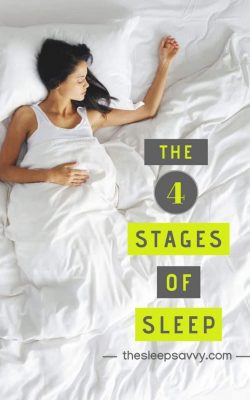We hope you love the product we recommend! Just so you know, at no extra cost to you, we may get a small commission for purchases made through links in this post. Your support is appreciated. Enjoy the read!
Want to biohack your way to better sleep?
In the eyes of society, diet and fitness were coveted while sleep was valued the least. Back in the day, those who slumbered on for too long were deemed lazy.
Not anymore!
The first step to biohacking your health is to understand how sleep works and the essential role it plays in our well-being.
Let’s start with learning about the 4 stages of sleep!
Sleep Basics
Now, pay attention because I’m going to give you a pop quiz at the end. Hahah – I’m not kidding. School’s in session!
Typically, we all move through 4 stages of sleep: 3 Non-REM stages and then REM (rapid eye movement).
These stages repeat themselves in what is called a ‘sleep cycle’ throughout the night. It takes about 90~ minutes to complete a cycle. More information about this below!
Before we dive into the nitty-gritty of sleep, let’s start with the basics.
The History & Timeline of Sleep Science
Back in ancient times, people thought our brains completely shut off while we are sleeping. Little did we know that the complete opposite is true.
Based on this Harvard Medical Department’s timeline, here are some of the major scientific discoveries related to sleep throughout history:
Dr. Nathaniel Kleitman, AKA the Father of Modern Sleep Research, opened the world’s first sleep laboratory at the University of Chicago.
His work spanned 70+ years and led to major findings that future researchers base their work on today.
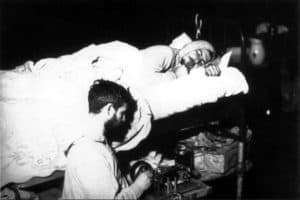
German Psychiatrist, Hans Berger invented the Electroencephalograms (EEG).
A device that measures and records electrical activity in the brain by hooking sensors up to a person’s head. The results are varying lengths of waves in graph form.
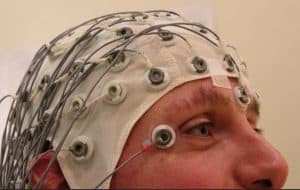
With the help of the EEG and continuous research, the original five stages of sleep were established.

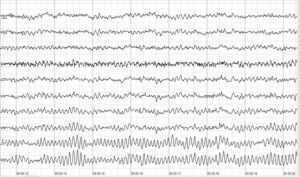
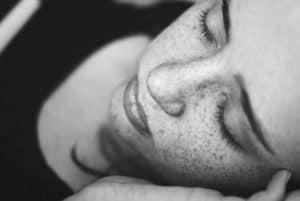
Rapid Eye Movement (REM) was coined by Dr. Kleitman and fellow researcher, Eugene Aserinsky.
While monitoring his own 8-year-old son, Aserinsky discovered that during the last stage of sleep our brains were highly active, contrary to popular belief.
Dr. William Dement, a student of Dr. Kleitman, established that sleep is cyclical.
For a healthy adult, a sleep cycle is typically 90 minutes long and repeats itself 4-5 times on average per night.
This is where the 8 hours a night recommendation comes from:
90-minutes X 5 cycles = 450 minutes
450 minutes / 60 minutes = 7.5 hours
American Academy of Sleep merges two stages of sleep, resulting in only 4 stages of sleep instead of 5.
Anything that talks about 5 stages of sleep have been outdated for over a decade now.
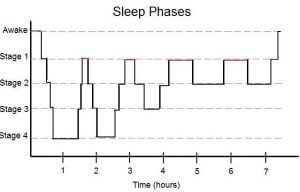
Even though scientists have been researching sleep for years now, we still aren’t sure why we sleep! Of course, there are many speculations, but nothing is proven yet.
In the words of Dr. William Dement:
“We sleep in order to not be sleepy.”
What is a Sleep Cycle?
There are two types of sleep that make up the 4 stages of a sleep cycle: Non-Rapid Eye Movement (NREM or “N” for short) and Rapid Eye Movement (REM).
We already learned that a typical cycle is 90 minutes long, but, according to Dr. Michael J Breus, the length of time a person needs to fully rest up is unique to that individual. This is why some people only need 6 hours of sleep per night, while others need much more.
I’ve noticed that I need 9 hours of sleep in order to wake up feeling refreshed, and that’s probably because I have a longer sleep cycle.
Bottom line:
Eight hours a night may be the general consensus, but there’s really no magic number. Everyone is different.
Sleep Cycles at Night
A healthy adult with no sleep disorders will cycle through the sleep stages on average 4-5 times a night.
After the first cycle, your brain alternates between REM and NREM sleep in reverse order.
For example, after REM, you will transition back into N3, then N2, then back to N3, then REM. If you wake up, then you’ll start at N1 again.
Got it?
There’s a positive correlation between REM and N2 – the more REM sleep you have, the more N2 you’ll also get.
You may wake up during the transition period between N2 and REM, but probably won’t remember doing so in the morning.
REM has the opposite relationship with N3 – Deep Sleep. As the night progresses, the longer you’re in REM, the less N3 your body needs.
So, what’s all this N1 and REM stuff?!
Let’s dig deeper, shall we?
Stage N1: Entering Sleep
You feel drowsy.
You crawl into your comfy bed, close your eyes and begin to drift off to sleep. I’m sure we’ve all experienced this before.
For a healthy adult with no sleep disorder, the initial Stage 1 only lasts up to 1 – 7 minutes before you enter Stage 2. This makes up only 2 – 5% of the total sleep time.
Your Brain & Body
This first stage is considered more of a transition period.
You start to let go of the day’s tension and your thoughts begin to slow down yet you’re still aware of your surrounding.
Since your brain still registers sounds, so you can easily get pulled out of this stage by the closing of a door or by the hum of your fridge.
Your heartbeat and breathing recede. Your eyes roll to the back of your eyelids. You part your mouth slightly as your jaw relaxes.
For some people, when they get woken up in this stage, they might even say they weren’t asleep at all.
Brainwaves
There are 5 main ones and they’re measured in frequency or cycles per second notated in Hertz (Hz).
It might look like you’re only emitting one brainwave frequency at a time, but you’re actually emitting several at all times. One is just usually more dominant.
Let’s find out how each brainwave is different from one another.
When you’re awake, alert and moving. You could be focused on something complex or trying to make a decision.
High brain activity as hundreds of thoughts are being filtered through your mind.
Most of the time, we’re in Beta.
NREM Stage 1 – Our brains begin to slow down.
You’re relaxed but barely conscious. You’re closing your eyes and ready to fall asleep.
We can daydream or be creative – we usually get our best ideas at this time.
NREM Stage 2 – Unconscious or in deep meditation.
Your brain is processing the day’s activities, committing information to long-term memory and regulating emotion.
Your brain continues to slow down.
Stage NREM 3 – Unconscious in deep sleep.
This is where healing on a cellular level takes place. It’s almost impossible to wake someone up in this stage.
Your brain slows down even further.
The latest brainwave to be discovered – not much is known about it.
You’re conscious and processing a lot of information or deeply focusing on something.
Hypnic Jerks
Stage NREM 1 is also when some involuntary body twitches happen, called ‘hypnic jerks’ or ‘sleep start’.
Why it happens is still a mystery but there are some theories.
Don’t worry about it too much because it’s perfectly normal and harmless. Sometimes, I jerk myself awake with my own twitches.
People with poor sleep quality may experience more hypnic jerks.
To reduce hypnic jerks, you can try:
- Cutting out caffeine, alcohol or similar stimuli
- Exercising during the day instead
- Reducing your mental and emotional stress levels
- Meditation or relaxation techniques
SAVVY FACT:
Stage 1 is essentially falling asleep, so it should only occur once if you don't wake up at all throughout the night!
Stage N2: Light Sleep
Stage 1 and 2 are usually defined together as ‘light sleep.’ However, Stage 2 is actually when you enter sleep.
Your Brain
Harder to awaken, any movements or noises that would jolt you out of slumber in Stage 1 will show up on the EEG as a K complex, while bursts of brain activity will show up as sleep spindles.
NREM 2 typically lasts up to about 10 – 25 minutes, representing 45 – 55% of your total sleep time.
In this time, you’re less aware of your surrounding, your brain activity continues to slow down and you start to emit more Theta waves.
Your Body
Your entire body continues to relax.
Your breathing, heart rate, blood pressure, and all metabolic functions slow down even further.
Your eyes stop moving, your body temperature drops.
Most of the night is spent this Stage. For good reason too!
Stage 2 is essential for memory consolidation. According to one study, people who learned something new during the day will have a higher density of sleep spindles than those in a control group.
You are now prepared to enter Stage 3 – the notorious Deep Sleep!
SAVVY FACT:
Like your naps? Did you know that different time spans are better for certain things?
- 20 – 30 minutes – fight fatigue with a power nap. You’ll feel refreshed because you haven’t entered Stage 3 yet!
- 90 minutes – commit something to memory. One full sleep cycle allows your brain to process something new you just learned!
Stage N3: Deep Sleep
Our most restorative period during sleep.
The last (and also most popular) stage of NREM is deep sleep, also known as Delta sleep or Slow-Wave sleep.
This last stage of NREM typically lasts 20 – 40 minutes, representing about 13 – 23% of your total sleep time.
The average person can transition from Stage 1 to 4 in about an hour. That is if there’s nothing keeping you up at night.
Your Brain
At this point, you’re giving off Delta waves – the lowest and slowest of brainwaves.
This usually occurs when you are in a deep but dreamless stage of sleep or meditation. In both cases, you’re no longer aware of your surrounding, as if you’re in a trance…
Speaking of trance, it’ll be super hard to wake you up during this time! Your mom would have to make a lot of noise or aggressively shake you back to life.
When you’re finally back to consciousness, you’ll feel completely discombobulated for a few minutes until you find your bearings.
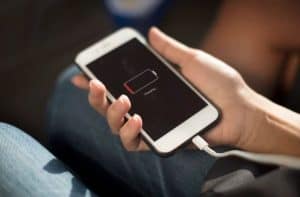
Your Body
Enter self-repair mode.
Growth hormones are released for development, blood supply to muscles increases, immune system expel toxins.
Most importantly, our energy recharges for the next day.
Weirdly enough, even though your body is in repair mode, this is also when parasomnia - Eg. sleepwalking, sleeptalking, bedwetting - happens most often.
Stage 4: REM Sleep
Ah, the dream stage.
Also called Rapid Eye Movement or Paradoxical Sleep.
You enter this stage about 90 minutes after you go to bed.
The first time you enter REM is short-lived – around 10 minutes max.
REM has an inverse relationship with N3 – Deep Sleep; it will lengthen in time as your sleep cycle repeats itself. By your last sleep cycle, your REM state can last up to 60 minutes.
Like deep sleep, as we get older, our REM time also gets cut short. For example, a baby spends about 50% in REM and adults spend only 20%.
Your Brain
This is where the paradox comes into play.
Your brain is highly active while your body is frozen, even though a lot of physiological changes are happening.
This is a GOOD thing!
Imagine how dangerous it is to be acting out whatever’s happening in your dream. Not only to yourself but others that are sleeping close to you.
At this point, you are exhibiting a combination of alpha, beta, and unequal waves, which is very similar to when you’re awake and conscious. There’s no dominate brain wave in REM.
Your Body
You’re kind of paralyzed.
Except for quickened breathing, a faster heartbeat, and your eyes moving in all different directions, your torso and limbs don’t move at all.
This is REM Atonia doing its work.
At this stage, you can be easily woken up and you’ll feel a bit groggy.
Sometimes, when you wake up during this phase, your body is still immobilized. This is called Sleep Paralysis – basically, REM is not done and still restricts your movements.
This has only happened to me once when I was a teenager and it freaked me out. It didn’t help that my mom kept saying something about a demon…All I can say is that I know better now.
SAVVY FACT:
Back in the ancient times, Chinese folklore tells a story about a ghost sitting on you while you sleep. That's why you can't move when you wake up. The Chinese term is 被鬼壓, which literally translated into “pressed by a ghost.”

Your Dreams
You can enter some very intense dreams in this stage.
On multiple occasions, I’ve had dreams so vivid that my body overrode the REM Atonia.
Many babies laugh in their sleep. Even I have laughed myself awake too many times to count. That is the BEST way to wake up – you’re ecstatic, you’re hysterical, and you don’t care that you don’t remember why you’re so happy!
Do you laugh in your sleep too?
Your brain doesn’t really register your dreams. There are many theories as to why that is, but we still aren’t 100% sure.
What we do know is that we forget our dreams quickly because we didn’t have time to transfer them from short-term to long-term memory.
Back in my college days, my dream recall ability was super weak, so I thought I didn’t dream at all. If I didn’t, then I’d go crazy! One study proved that not dreaming negatively impacts your memory – both object recognition and contextual fear.
SAVVY FACT:
Want to improve your dream recall skills? Think about wanting to remember your dream before bed and jot down the details when you wake up!

Stages of Sleep FAQs
Although there are still many mysteries in the study of sleep, there is a range of valuable information scientists have discovered already.
What are the different stages of sleep?
The different stages of sleep are:
- N1 – Relaxed Stage – you’re falling asleep, easy to wake up and emitting alpha waves
- N2 – Light Sleep – you just fell asleep, harder to wake up and sending out theta waves
- N3 – Deep Sleep – you’re out cold, body in self-repair mode and transmitting delta waves
- REM – Dream Stage – you’re dreaming, committing things to memory and exhibiting different brainwaves
What is the deepest stage of sleep?
The deepest stage of sleep is Stage N3. It’s the hardest stage to wake someone up from.
People commonly get REM and Deep Sleep mixed up – they’re NOT the same. REM is when you typically dream and deep sleep is where your body repairs itself.
How long is each sleep stage?
This is how long each sleep stage is on average:
- N1 = 10~ minutes
- N2 = 25~ minutes
- N3 = 45~ minutes
- REM = 10~ minutes
The FIRST sleep cycle lasts about 90 minutes.
As the night goes on, our sleep cycle length will get longer and the duration of each stage will change. Typically, you will alternate between REM and N2 the most.
What sleep stage do you dream in?
It’s possible to dream during NREM stages, but most vivid dreams occur in REM Sleep.
Again, REM (Stage 4) is NOT Deep Sleep (Stage 3). Learn more here!
Why is REM sleep important? What is REM sleep?
REM sleep is the last stage of the sleep cycle, where your brain is actively dreaming and emit brain waves similar to when you’re awake.
REM sleep is important because it’s when all the good stuff happens!
Your body is fixing itself on a cellular level, processing earlier events and transferring information into your long-term memory.
Without it, your cognitive ability will be affected.
How much sleep do you need by age?
According to the National Sleep Foundation, This is much sleep you need by age:
- 0-3 months = 14-17 hours
- 4-11 months = 12-15 hours
- 1-2 years = 11-14 hours
- 3-5 years = 10-13 hours
- 6-13 years = 9-11 hours
- 14-17 years = 8-10 hours
- 18-25 years = 7-9 hours
- 26-64 years = 7-9 hours
- 65+ years = 7-8 hours
Keep in mind that everyone’s needs are different, so it’s OK if you are slightly below or above the range.
Is it hard to wake someone in REM sleep?
No, it’s not hard to wake someone in REM sleep – quite easy, actually.
People who do wake up at the tail end of their REM sleep tend to recall their dreams easily.
It’s only hard to wake someone during deep sleep (Stage N3).
Can you sleep too much?
Yes, you can sleep too much.
Dr. Michael J Breus‘ opinion is that oversleeping can lead to similar diseases and disorders as not getting enough sleep.
Your body should be able to regulate how much sleep you need unless you have a disorder.
Is 4 or 7 hours sleep enough?
4 or 7 hours of sleep COULD be enough.
Your sleep needs are unique to you. It depends on so many factors like:
- Genetics – What are you genetically predisposed to?
- Age – As you get older, you need less sleep
- Fitness Level – The more active your lifestyle, the more your body needs to repair itself
- Health – If you caught the flu, you’ll need more sleep too
- Stress – What’s your life circumstances like – pressure from work or family?
Bottom line:
If you give yourself enough time to sleep and you don’t have any sleeping disorders, your body will naturally get itself into a rhythm.
Why do I feel worse after taking a nap?
You feel worse after taking a nap because you probably didn’t wake up at the end of a sleep cycle.
This is especially true if you wake up during deep sleep (Stage 3).
Try setting an alarm so you don’t overextend your nap!
Remember 20 – 30 minutes to recover from fatigue (before you enter Stage 3) OR 90 minutes to commit something to memory (to complete 1 sleep cycle).
7 Tips for Better Sleep
We’re always craving for a better night’s sleep, but would going to bed earlier do the trick? How do we do it exactly?
Here are some things you can try:

1. Essential Oils
Dap some on your temples, inner wrist or elbow for fast absorption. Otherwise, you can use a diffuser.
We’ve all heard about the magic powers of lavender, but did you know that Sandalwood, Bergamot, and Valerian have similar effects?
2. Journal
According to the University of Rochester’s Medical Department, writing out your thoughts, worries, goals or even just tomorrow’s to-do list can help you!
Try burning the piece of paper of worries – you might feel pretty satisfied!

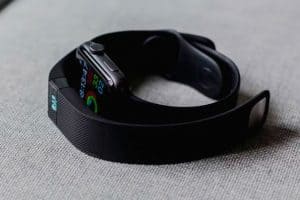
You can’t improve what you can’t measure, so start tracking your sleep journey!
Don’t want to shell out for a Fitbit or Apple Watch? Try these freemium mobile apps instead:
4. Magnesium Supplement
A natural essential mineral that our body does not produce, Magnesium is consumed through food. It has many benefits, which includes relaxing our muscles.
Try taking a capsule before bed!


5. Meditation
There has been endless talk about the wonders of meditation but does it really work? Find out yourself!
Like sleep trackers, there are many mobile apps on the market that can guide you like: Headspace and Calm (iOS).
6. No Food After 7PM
Too many people eat dinner at way too late.
Your body needs time to digest before you go to bed. Or else, it won’t be able to focus all its energy on self-repair when you shut down at night.
My advice? Stick to a 6PM dinner time. If you get hungry, drink water.

7. Set a Bedtime Routine
Last but not least, give yourself a night routine to follow. Steal the evening routine of Shawn Steveston – the sleep hacker expert!
Sleep Stage – Pop Quiz!
Don’t worry – it’s easy. Either fill in the blank or give a short answer.
- Bed-wetting and sleepwalking are most likely to be associated with ___ sleep.
- In what stage do sleep spindles begin to appear on the EEG machine?
- Sleep spindles and k-complexes are most often associated with ___ sleep.
- Paradoxical sleep is to slow-wave sleep as ___ sleep is to ___ sleep.
- Which type of wave predominates during stage 4 REM sleep?
- The biological cycle that regulates our pattern of sleep is called ____.
- Stages 3 and 4 of sleep stages are associated with ______________
- Delta waves are most clearly associated with ________ sleep.
- Dreams are most often reported when sleepers wake from _____ sleep.
- Of the NREM sleep stages, stage _____ is the longest for people in their early 20s.
The answers? Well, they’re in this article somewhere, you just have to find it 🙂
Biohacks For Sleep
Biohacking for sleep refers to the use of various techniques and technologies to optimize and improve sleep quality. These techniques, which are also known as “sleep hacking,” can range from simple lifestyle changes to the use of specialized devices and supplements.
Some examples of biohacking techniques that may be used to improve sleep include:
Establishing a regular sleep routine: Creating a consistent bedtime and wake-up time, as well as a relaxing pre-sleep routine, can help to regulate the body’s natural sleep-wake cycle.
Creating a sleep-friendly environment: This can include things like using blackout curtains to block out light, keeping the bedroom cool and dark, and using a white noise machine to mask any external noise.
Using relaxation techniques: Techniques such as meditation, deep breathing, and progressive muscle relaxation can help to reduce stress and promote relaxation, making it easier to fall asleep.
Using specialized devices: There are a range of devices on the market that are designed to improve sleep, including sleep masks that block out light, smart alarms that wake you up at the optimal time in your sleep cycle, and wearable sleep trackers that monitor your sleep patterns and provide feedback.
Taking supplements: Some people find that certain supplements, such as melatonin or magnesium, can help to improve sleep quality. However, it is important to speak with a healthcare professional before taking any supplements to ensure they are safe and appropriate for you.
Overall, biohacking for sleep can be a helpful way to improve sleep quality and optimize the body’s natural sleep-wake cycle. However, it is important to remember that everyone is different, and what works for one person may not work for another. If you are having difficulty sleeping, it is always a good idea to speak with a healthcare professional for guidance and support.
Final Thoughts
So, what was new that you learned today?
Here are some brief highlights:
- Humans sleep in cycles – one sleep cycle is typically 90 minutes
- There are 4 different stages of sleep, and you emit different brain waves in each stage
- Deep Sleep and REM (dream state) are NOT the same things
- Hypnic jerks are totally normal
- You got 7 tips on how to get better sleep
- You got answers to 11 frequently asked questions about sleep
Now that you know what you can do to get that oh-so-coveted deep sleep, you can either:
a) go forth and slumber away, or
b) learn more sleep secrets!
But before you do, what kind of helpful biohacks do you have to share with us?
>> Want to check beddings? Read nest bedding review here!<<


